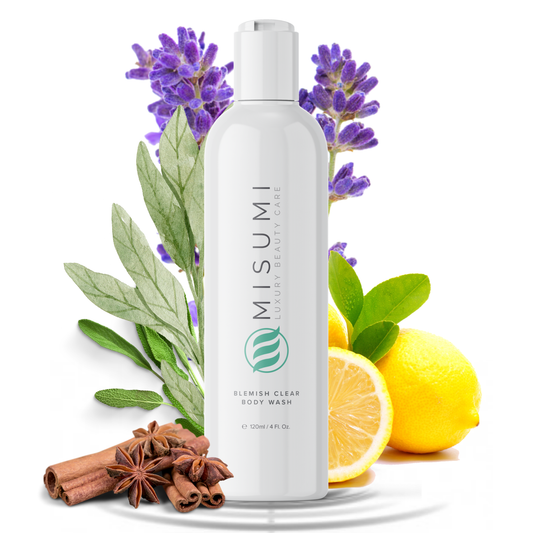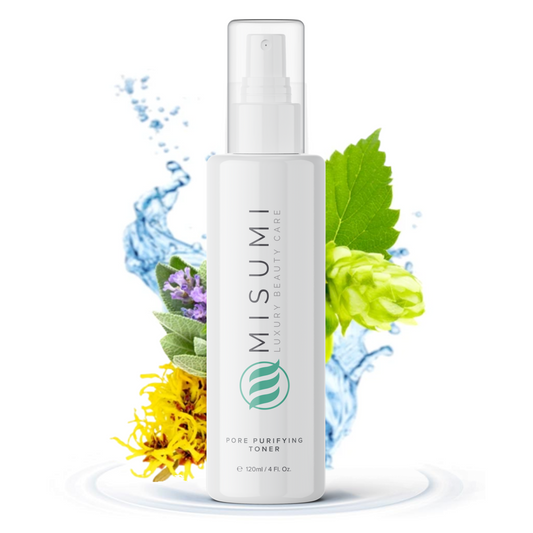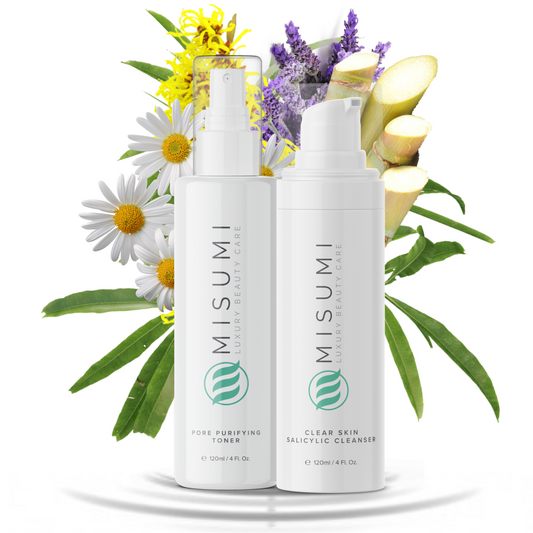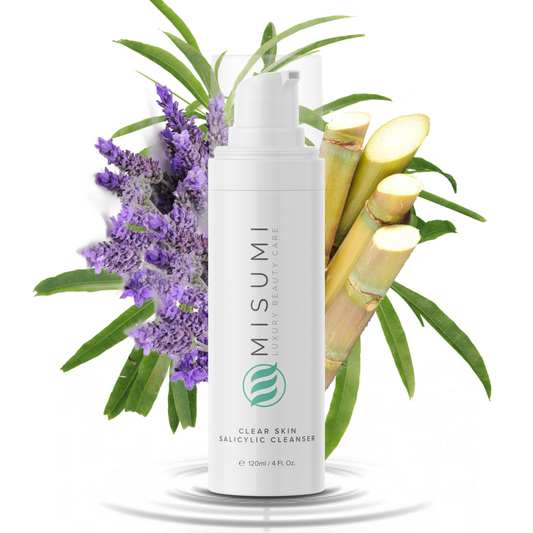Dealing with fungal acne breakouts can be frustrating and challenging. Unlike regular acne, fungal acne is caused by an overgrowth of yeast on the skin, resulting in small, itchy bumps that resemble acne.
If you're one of the many fungal acne sufferers out there, fret not! There are effective solutions to help you combat this pesky condition and restore your skin's health. In this article, we'll explore the best dermatologist-approved face washes for fungal acne, providing you with the guidance you need to achieve clear and radiant skin.
Understanding Fungal Acne
Before we dive into the world of fungal acne-safe cleansers, it's essential to understand what fungal acne is and how it differs from regular acne. Fungal acne, scientifically known as Malassezia folliculitis, is caused by the overgrowth of a yeast called Malassezia on the skin. These yeast cells feed on the excess sebum produced by your skin, leading to the development of tiny, itchy bumps.
Unlike bacterial acne, fungal acne does not result from clogged pores or bacteria. Instead, it thrives in humid environments and is triggered by factors such as excessive sweating, tight clothing, or the use of occlusive skincare products. Fungal acne often appears on the chest, back, and shoulders, but it can also affect the face, causing discomfort and self-consciousness.
A Fungus Among Us: Understanding and Differentiating Types of Fungal Acne

Fungal acne is a term that has gained a lot of traction in the skincare world, despite it being a bit of a misnomer. Technically called Pityrosporum Folliculitis or Malassezia Folliculitis, this condition isn't acne at all, but rather an overgrowth of yeast (a type of fungus) that leads to a breakout of small, often itchy, bumps. While the condition can look similar to traditional acne, it's important to know how to differentiate it for proper treatment.
First, let's dispel a common myth: fungal acne isn't an indication of poor hygiene. It can result from a combination of factors, including imbalances in skin microflora, a compromised skin barrier, or certain lifestyle factors.
Fungal acne can manifest in several ways. Here are the most common types of fungal skin conditions that can be mistaken for acne:
1. Malassezia Folliculitis
Malassezia Folliculitis, commonly referred to as fungal acne, presents as small, uniform, itchy pimples. They can appear anywhere on the body but are most common on the chest, back, and arms. Unlike bacterial acne, these breakouts are often resistant to traditional acne treatments and may worsen with the use of antibiotics or oil-based skincare products.
2. Seborrheic Dermatitis
Seborrheic Dermatitis is a common skin condition that causes flaky, dandruff-like scales to form on oily areas of the body, like the scalp or inside the ear. It can also appear on the face and upper chest or back. While it doesn't present as bumps like fungal acne, it's caused by the same yeast (Malassezia) and can often coexist with fungal acne.
3. Tinea Versicolor
Tinea Versicolor is a fungal infection that causes small, discolored patches of skin. The patches may be lighter or darker than your surrounding skin and may have a fine, scaly texture. It's most commonly seen on the back, chest, and shoulders.
4. Pityriasis Rosea
Pityriasis Rosea is a skin rash caused by a viral infection, often mistaken for fungal infections or even eczema due to its appearance. The rash begins as a single, round or oval 'herald patch' and later followed by a pattern of smaller lesions on the trunk of the body.
Differentiating between these conditions can be challenging, and self-diagnosis isn't always reliable. If over-the-counter anti-fungal treatments don't clear your skin, or if you're unsure of what's causing your breakouts, it's crucial to consult with a dermatologist. They can diagnose your condition accurately and suggest the most effective treatment.
With any skin condition, remember that patience and consistency are key. It may take a few weeks to see significant improvement, and sticking to your treatment plan is crucial. And while it can be frustrating dealing with stubborn skin conditions, remember you're not alone, and effective treatments are available.
Differentiating Fungal Acne from Other Types of Acne: A Clear Guide

Acne is a prevalent skin condition that affects millions of people worldwide. It manifests in different forms, each with unique characteristics and causes. One lesser-known and often misdiagnosed variant is fungal acne, also known as Malassezia folliculitis. Here's a detailed guide to help you identify fungal acne and distinguish it from other forms of acne.
Fungal acne isn't acne in the traditional sense. While common acne, or acne vulgaris, is caused by bacteria (Propionibacterium acnes), fungal acne is caused by an overgrowth of yeast (Malassezia) in hair follicles. This fundamental difference in causative agents is why fungal acne may not respond to typical acne treatments and why identification is so crucial.
Appearance and Location

Fungal acne typically presents as small, uniform, itchy papules (raised bumps) or pustules (bumps containing pus), while regular acne tends to manifest as a mixture of blackheads, whiteheads, papules, pustules, cysts, and nodules. These various types of lesions in acne vulgaris can range in size, whereas fungal acne lesions are usually similar in size and appearance.
Fungal acne often erupts in areas with a high concentration of sweat glands, such as the chest, back, and upper arms. It can also appear on the forehead, especially in individuals who sweat profusely or frequently wear occlusive headgear. Conversely, regular acne usually appears on the face, shoulders, chest, and back but lacks the uniform, itchy rash typical of fungal acne.
Triggers
Fungal acne often flares up in hot, humid environments or under tight, occlusive clothing that traps sweat. These conditions promote yeast growth and distinguish it from bacterial acne, which is typically associated with hormonal changes, stress, certain foods, and poor skin hygiene.
Response to Treatment

If you've been following a traditional acne regimen with no improvement, it could be a sign of fungal acne. Fungal acne generally doesn't respond well to conventional acne treatments such as benzoyl peroxide or topical retinoids.
However, it may respond to anti-dandruff shampoos or topical antifungal creams containing ingredients like ketoconazole or selenium sulfide.
Despite these differentiating characteristics, fungal acne can still be challenging to diagnose at home since it often coexists with bacterial acne. Therefore, if you suspect you have fungal acne, it's crucial to consult a dermatologist for a definitive diagnosis.
They may take a skin scraping or biopsy to examine under a microscope or conduct a culture test to confirm the presence of fungal overgrowth.
Understanding the difference between fungal acne and other forms of acne is vital for effective treatment. Recognizing the unique signs of fungal acne can guide you toward the right treatment path and, ultimately, clearer, healthier skin.
Does cleanser matter for fungal acne?
Absolutely. The type of cleanser you use can significantly affect fungal acne, also known as Malassezia folliculitis. Traditional acne treatments may not work effectively on fungal acne because it's caused by yeast (a type of fungus) rather than bacteria.
It's best to opt for a cleanser that's antifungal and oil-free. Some ingredients to look out for include ketoconazole, pyrithione zinc, and selenium sulfide, as these are antifungal agents that can help control the yeast responsible for fungal acne. You should also avoid oil-based skincare products because Malassezia yeast feeds on oils, specifically fatty acids with a carbon chain length of 11-24.
The Importance of Choosing the Right Face Wash
When it comes to treating fungal acne, choosing the right face wash is crucial. A fungal acne-safe cleanser should effectively eliminate the yeast overgrowth while being gentle enough not to worsen the condition or irritate sensitive skin. Let's explore some dermatologist-approved face washes that meet these criteria:
1. Misumi AHA 10% Skin Perfecting Cleanser

One of the best fungal acne-safe cleansers available is the Misumi AHA 10% Skin Perfecting Cleanser. This cleanser combines the power of alpha hydroxy acids (AHAs) with soothing botanical extracts, creating a potent formula that fights fungal acne without stripping the skin's moisture. AHAs, such as glycolic acid and lactic acid, gently exfoliate the skin, unclog pores, and remove dead skin cells, effectively targeting fungal acne symptoms.
2. CeraVe Salicylic Acid Cleanser

Another excellent option for fungal acne-prone skin is the CeraVe Salicylic Acid Cleanser. Salicylic acid is a dermatologist-recommended ingredient known for its ability to penetrate the pores, exfoliate the skin, and reduce inflammation. This cleanser is specifically formulated to treat acne and helps clear fungal acne breakouts by eliminating excess oil and dead skin cells.
3. Neutrogena Oil-Free Acne Wash

The Neutrogena Oil-Free Acne Wash is a tried-and-true option for those dealing with fungal acne and acne-prone skin. It contains salicylic acid to unclog pores and prevent future breakouts. This face wash is gentle enough for daily use and is often recommended by dermatologists to effectively combat acne and fungal acne symptoms.
4. La Roche-Posay Effaclar Medicated Gel Cleanse

The La Roche-Posay Effaclar Medicated Gel Cleanser is an excellent choice for those with sensitive and reactive skin prone to fungal acne. This cleanser contains 2% salicylic acid, which helps exfoliate the skin, unclog pores, and reduce inflammation. It is also formulated with thermal spring water, known for its soothing properties, making it suitable for sensitive skin types.
5. Misumi Blemish Clear Body Was

If you're dealing with fungal acne breakouts on your body, don't worry! The Misumi Blemish Clear Body Wash is a dermatologist-approved option that effectively targets fungal acne on the chest, back, and shoulders. This body wash contains salicylic acid and natural extracts, working together to combat fungal acne symptoms and promote healthy skin.
What kills fungal acne fast?
There isn't necessarily a 'fast' solution for fungal acne, but there are effective ways to treat it:
- Topical antifungal creams: Over-the-counter creams containing ketoconazole or clotrimazole can be effective in treating fungal acne.
- Antifungal shampoos: Shampoos containing ketoconazole or pyrithione zinc can also be beneficial. You can apply the shampoo to affected areas and leave it on for a few minutes before rinsing.
- Oral antifungal medication: For more severe or stubborn cases, a healthcare provider may prescribe oral antifungal medication.
- Skincare routine: Use oil-free, non-comedogenic, and fragrance-free skincare products to prevent clogging of the pores. A skincare routine that includes a suitable cleanser, toner, moisturizer, and sunscreen can also be beneficial.
Remember, it's crucial to get a correct diagnosis before treating what you suspect to be fungal acne. If over-the-counter solutions aren't helping, consider reaching out to a healthcare provider or a dermatologist for a professional opinion.
Best Body Washes To Help Clear up Fungal Acne on the Body
Fungal acne, or Malassezia folliculitis, responds best to body washes and shampoos that contain anti-fungal ingredients. Here are a few recommendations:
1. Nizoral Anti-Dandruff Shampoo
This contains ketoconazole, a potent anti-fungal agent effective against Malassezia yeast. While it's a shampoo, it can be used as a body wash on affected areas. Leave it on for a few minutes before rinsing off for best results.
2. Head and Shoulders Classic Clean Anti-Dandruff Shampoo
This shampoo contains pyrithione zinc, another effective anti-fungal ingredient. Like Nizoral, it can also be used as a body wash.
3. Selsun Blue Medicated Maximum Strength Dandruff Shampoo
This product contains selenium sulfide, which can also be beneficial in the treatment of fungal acne.
4. CeraVe SA Body Wash for Rough & Bumpy Skin
While not an anti-fungal wash, this product contains salicylic acid, which can help clear excess oil and dead skin cells that can contribute to fungal acne breakouts.
5. Vanicream Z-Bar (Pyrithione Zinc 2%) Medicated Cleansing Bar
A soap-free, sensitive-skin friendly option that contains pyrithione zinc, an ingredient effective against fungal acne.
6. Noble Formula 2% Pyrithione Zinc Bar Soap
This is another great soap option that includes pyrithione zinc. It also has oatmeal, which can soothe inflamed skin, and emu oil, which has anti-inflammatory properties.
Remember to patch test new products before applying them to larger areas, as they can sometimes cause irritation or allergic reactions. If your symptoms persist after using over-the-counter products, it would be best to consult a healthcare provider or a dermatologist for professional advice.
Enhancing Your Fungal Acne Skincare Routine
While choosing the right face wash is essential, maintaining a comprehensive skincare routine is equally important for treating fungal acne. Here are some tips to enhance your fungal acne skincare routine:
- Cleanse gently: Avoid using harsh scrubs or abrasive cleansers that can further irritate your skin. Opt for gentle cleansers that won't disrupt your skin's moisture barrier.
- Moisturize effectively: Look for moisturizers that contain ingredients like hyaluronic acid, ceramides, or aloe vera. These hydrating ingredients help restore the skin's moisture balance and strengthen the skin barrier.
- Avoid potential irritants: Stay away from skincare products with essential oils, as they can exacerbate fungal acne symptoms. Similarly, be cautious with fatty alcohols, which can potentially clog your pores.
- Consider targeted treatments: In addition to using a fungal acne-safe cleanser, your dermatologist may recommend antifungal creams or oral medications to target the underlying yeast overgrowth.
- Maintain a healthy lifestyle: Pay attention to your diet, as certain foods can trigger fungal acne breakouts. Avoid excessive consumption of sugar and processed foods, as they can contribute to yeast overgrowth.
Consult a Dermatologist for Personalized Treatment
While the face washes mentioned above are dermatologist-approved and suitable for many fungal acne sufferers, it's crucial to remember that everyone's skin is unique. If you have severe or persistent fungal acne symptoms, it's best to consult with a dermatologist for personalized treatment options. They can assess your condition and recommend the most effective course of action to alleviate your fungal acne and restore your skin's health.
Conclusion
Dealing with fungal acne can be a frustrating experience, but with the right face wash and a comprehensive skincare routine, you can overcome this condition and achieve clear, healthy skin. Remember to choose a fungal acne-safe cleanser that effectively fights yeast overgrowth while being gentle on your skin.
Enhance your skincare routine by moisturizing effectively, avoiding potential irritants, and considering targeted treatments if necessary. By taking the necessary steps and seeking professional guidance, you'll be well on your way to saying goodbye to fungal acne and embracing the radiant skin you deserve.








